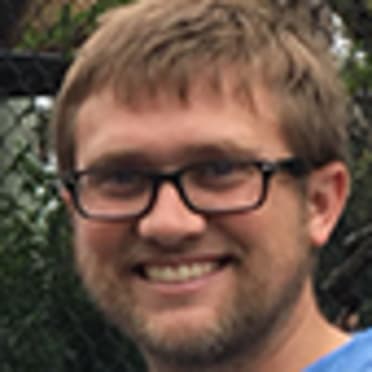
A version of this story was originally published in April 2020.
SAN DIEGO -- Baseball historian Bill Swank says it authoritatively, so that he leaves no doubt:
"Johnny Ritchey," Swank says, "was everything you'd expect out of an American hero."
And who could argue?
Ritchey, like so many children of the 1920s, grew up dreaming of playing professional baseball. He lived that dream in his hometown, tearing down racial barriers in the Pacific Coast League along the way.
But before Ritchey became the PCL's first African-American ballplayer, the sweet-swinging catcher put his dream on hold to serve 27 months in a combat engineering unit in World War II. He earned five battle stars.
Eighteen years after his death, Ritchey's legacy is as alive as it has ever been in San Diego. The Padres will formally announce the second annual winner of the Johnny Ritchey Breaking Barriers Scholarship on Thursday to celebrate Jackie Robinson Day.
"As native San Diegans, we’re proud that our dad's legacy is enduring here," said Ritchey's daughter, Johnaa Battle. "He truly deserves that. We can't even imagine the hatred, the bigotry, the negative stuff he had to endure. ... It's a testament to the fact that he went through all that, yet he still maintained his dignity. He was a genuinely happy person. He was incredible."
Ritchey's journey was, indeed, a hero’s journey. But Battle and Swank are quick to point out that Ritchey always did his best to avoid using that language.
"All he wanted to do was play baseball," says Swank, who authored numerous books about San Diego baseball and grew close with Ritchey after his playing career. "Johnny was a pioneer. He's become an historic figure because he was the first. But I'm not sure he wanted all that. He just wanted to be a ballplayer."
More than a ballplayer
Ritchey attended San Diego High School, which was already integrated. The baseball teams he played for were, too. But he received a jarring indoctrination into the era’s racial prejudices in 1938.
When Ritchey’s American Legion team reached the World Series in Spartanburg, S.C., he and another black player on the team were barred from competing.
Two years later, the squad qualified again, this time refusing to travel to North Carolina without assurances that Ritchey and teammate Nelson Manuel would play. The team received those assurances, and Ritchey helped spark a run to the championship. But tournament organizers reversed that decision, denying Ritchey and Manuel a chance to play in the finals.
"They were given a promise that it wouldn’t happen again," Swank said. "And it did. That left an indelible mark on Johnny. He wasn’t used to being treated like that. There were problems on the West Coast. But not like that."

Later that summer, Ritchey enrolled at San Diego State. But in the winter before his sophomore season, the United States was thrust into World War II, and Ritchey joined the Army.
He served in what's known as "the Red Ball Express," a truck convoy of mostly black soldiers that shuttled Allied supplies through Europe. Ritchey also fought at the Battle of the Bulge in 1944, a crucial Allied victory.
Two years later, Ritchey was off the battlefield and back onto the baseball field. He played his final season at San Diego State in 1946, leading the Aztecs with a .356 batting average. A year later, he joined the Chicago American Giants, where he won a batting title in his only season in the Negro Leagues.
Swank compared Ritchey's smooth left-handed stroke to another Padres (and Aztecs) legend.
"He was a line-drive hitter, kind of like Tony Gwynn," Swank said. "Everywhere he went, he hit .300."
Hometown hero
Following Ritchey's breakout 1947 season in the Negro American League, the Padres expressed interest in bringing Ritchey home to play in the PCL. Thirty-two years earlier, Jimmy Claxton had played two games for the Oakland Oaks of the PCL, listing himself as Native American. But after a friend revealed Claxton’s African-American ancestry, he was released.
The league hadn’t featured a black player since, but times were changing. Jackie Robinson had broken Major League Baseball's color barrier the previous spring. The Padres and Ritchey came to an agreement in mid-November 1947, making him the first black player to sign a PCL contract. Three others followed suit that winter.
On Nov. 23, in an article published in the San Diego Union, team president Bill Starr said: “We believe we have signed one of the finest prospects in the country. His record at San Diego High School, State College and with the Chicago Negro team has been particularly outstanding. … We are not sponsoring any causes. Our interest in Ritchey is primarily that he can swing that bat. He is a potential major league prospect and has a better than reasonable chance of helping the Padres.”
Indeed, Ritchey could “swing that bat.” He hit .323 with a .405 on-base percentage in his first season with the Padres. Perhaps most noteworthy from that 1948 season was Ritchey’s reception at Lane Field. The Ritcheys were a well-known family in San Diego. They had moved west two generations prior. His brother was a police officer and later became an attorney.
"Johnny said when he first played for the Padres, in his first game, there were fans already cheering for him," Swank recalled. "That’s because in San Diego, they knew who he was. That’s not to say there weren’t problems. That doesn't mean there wasn't a lot of prejudice for him to face. There was. But for the most part in the PCL he didn’t have to endure some of what Jackie Robinson endured."
A growing legacy
Ritchey played 10 seasons in organized professional baseball, including time in Mexico, Venezuela and the Western International League. But his two years in San Diego were special.
"For Pop to be able to play here, that was just beyond belief for him," Battle said. "This was his home. This was his community. When you’re born and raised somewhere and you get to come back and play for the only city that you know, who wouldn’t feel proud and happy to be able to do that?"
Ritchey returned to San Diego after his baseball career, and all three of his children remain in the area. Since his death in 2003, Ritchey’s legacy has only grown.
A bust of Ritchey is on display at Petco Park, unveiled after the stadium opened in 2004. In ’17, Ritchey was inducted into San Diego Hall of Champions’ Breitbard Hall of Fame, joining the likes of Gwynn, Dave Winfield, Graig Nettles, Alan Trammell and Ted Williams.
Ritchey’s latest honor might be the most important one: a scholarship awarded annually to an “individual who upholds the values Johnny Ritchey embodied, especially the capacity to overcome challenges and barriers in academics, sports and/or in the community.”
Laila Williams was a deserving first winner in 2020. She was a high school senior (and a lifelong Padres fan) at Ritchey’s very own San Diego High School, before attending UC Santa Cruz with plans to become an OB/GYN -- in part, she says, because of the low rate of African-American OB/GYNs in the county.
"It’s really inspirational, especially being a black person and coming from a history where we’ve been put down for so long," Williams said. "Just hearing what he did and his legacy, it’s amazing what he accomplished. It sets a precedent, especially for young black students and especially me, going to San Diego High. It’s possible to accomplish your dreams."
Ritchey accomplished his. In doing so, he created a path for others to accomplish theirs.
“We’re just so happy for this young lady,” Battle said. “It’s really just another way for John Ritchey’s legacy to continue."
What a legacy. Some -- though certainly not Ritchey himself -- might even call it heroic.


